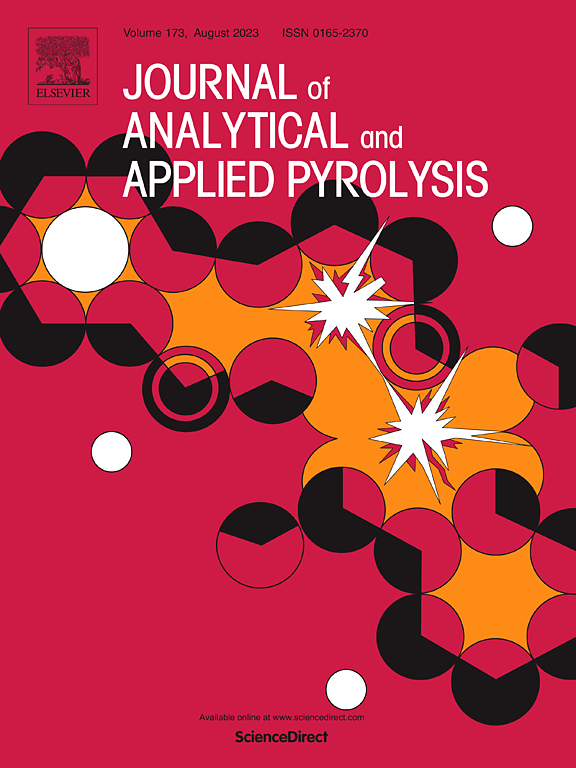Analysis of component interaction in beech wood pyrolysis by native mixing with mildly invasive pretreatments
IF 5.8
2区 化学
Q1 CHEMISTRY, ANALYTICAL
引用次数: 0
Abstract
Component interactions in biomass pyrolysis are often investigated through native mixtures obtained by partially destructive chemical pretreatments. In this study, mild pretreatments (washing and washing-torrefaction) are applied to beech wood. They are apt to preserve the main chemical structure of the constituents and the role of their mutual bonds in pyrolysis and to reduce or eliminate the overlap between hemicellulose and cellulose decomposition. Then, exploiting recently available lignin data and model fitting, decomposition kinetics of natural cellulose and hemicellulose is clearly identified and determined. The activation energies (157 and 170 kJ/mol) for the two hemicellulose reactions are not affected by pretreatments. Moreover, that for the single stage of cellulose decomposition is weakly modified (from 200 to 222 kJ/mol) only by washing. The interactions and the possible synergies among components always give rise to char yields lower (factors around 2–3) than those observed from model compounds or chemically isolated ones and remarkable different conversion dynamics. These findings indicate that mixing approaches, not fully incorporating component interactions, are not quantitatively accurate. Primary decomposition mechanisms of more general validity, accounting for quantities, properties and mutual interactions of natural components, are also the first requirement for accurate modeling of secondary reaction processes within the complex microporous structure of wood.
求助全文
约1分钟内获得全文
求助全文
来源期刊
CiteScore
9.10
自引率
11.70%
发文量
340
审稿时长
44 days
期刊介绍:
The Journal of Analytical and Applied Pyrolysis (JAAP) is devoted to the publication of papers dealing with innovative applications of pyrolysis processes, the characterization of products related to pyrolysis reactions, and investigations of reaction mechanism. To be considered by JAAP, a manuscript should present significant progress in these topics. The novelty must be satisfactorily argued in the cover letter. A manuscript with a cover letter to the editor not addressing the novelty is likely to be rejected without review.

 求助内容:
求助内容: 应助结果提醒方式:
应助结果提醒方式:


